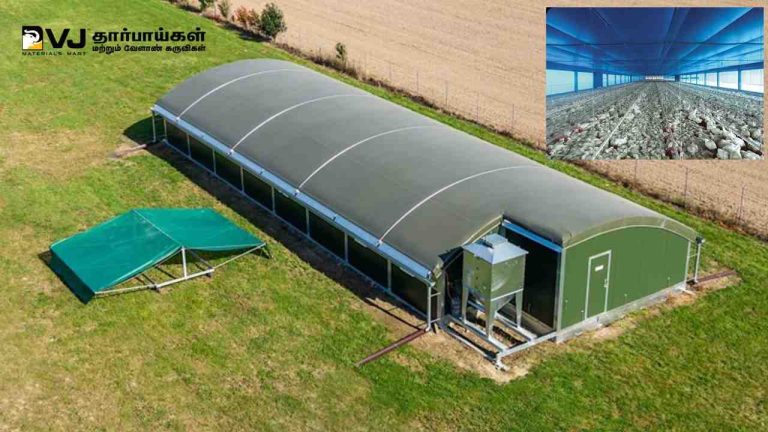Vertical Farming is an agricultural practice in which crops are produced in vertically stacked layers. It is done in a controlled environment using techniques such as Aquaponics, Hydroponics, and Aeroponics, which do not require soil.
With a growing population and limited functioning land, Vertical Farming may be used to meet the world’s increasing food demand. In this blog, VJ Materials Mart explains the benefits and types of Vertical Farming Methods and Designs for Rooftop.
A well-executed Rooftop Farming provides nutritious food throughout the year. Harvesting your food organically gives you control over seeds, pesticides, and fertilizers. Your organic waste from the kitchen can be used as fertilizer for your farm.
VJ Materials Mart lists the types of Vertical Farms that help to enhance the Future of Vertical Farming and Agriculture.
Hydroponics is the most common growth technology used in Vertical Farms, involves growing plants in nutrient-rich fluids free of dirt. VJ Materials Mart includes designs that enable constant checking and circulation to ensure the proper chemical composition is maintained.
An Aquaponic system combines plants and fish in the same ecosystem. Fish grown in indoor ponds produce nutrient-rich waste used as a feed source for the plants in the Vertical Farm. The plants filter and purify the wastewater, which is recycled into fishponds.
Although Aquaponics is employed in smaller-scale Vertical Farming systems, most commercial Vertical Farming systems produce only a few fast-growing vegetable crops. This simplifies economic and manufacturing difficulties while maximizing efficiency. New standardized Aquaponic systems can increase the popularity of closed-cycle systems.
Vertical Farming methods are categorized based on the type of structure that contains the system.
Managing water, fertilizers, and Pest Management in a soil-based Vertical Farm can be difficult. Efficient irrigation, organic fertilizers, and integrated Pest Management approaches are crucial for maximizing this system.
Vertical Farming is a transformative idea that not only reconsiders the space we grow in, but also overcomes the drawbacks of traditional agriculture. Take a look at the benefits you receive from VJ Materials Mart:
Vertical Farming enjoys water and energy efficiency. Targeted irrigation techniques allow farming to use up to 95% less water than conventional farming. Furthermore, crop stacking saves land and energy for transportation, making Vertical Farms an outstanding instance of environmental care. Furthermore, Vertical Farming approaches minimize agrichemicals, pollution, and runoff.
With a protected environment of Vertical Farming, depending on Pesticides and Harmful is minimized or reduced. This includes an organic approach and is suitable for modern consumers.
Growing vertically transforms the way we think about agricultural space, allowing us to get more output from each square meter.
Within the controlled environment, crops grow every year, enabling farmers to estimate results accurately. This provides significant assistance for varied supply chains and consumer demands.
With controlled Vertical Farming, environmental factors such as floods, droughts, and burns are eliminated.
Vertical Farms cultivate plants on tall, multi-layered shelves. Shelves must be durable and able to withstand environmental changes without rusting, degrading, or any other damage. Select which kind of rack is useful for your Farming.
LED lights are great for almost all sorts of food, so there is no need to separate lighting for various plants.
Drainage is another important aspect of Vertical Farming design. A high-quality, efficient, and clean sewage system is crucial to the safety of a Vertical Farm.








